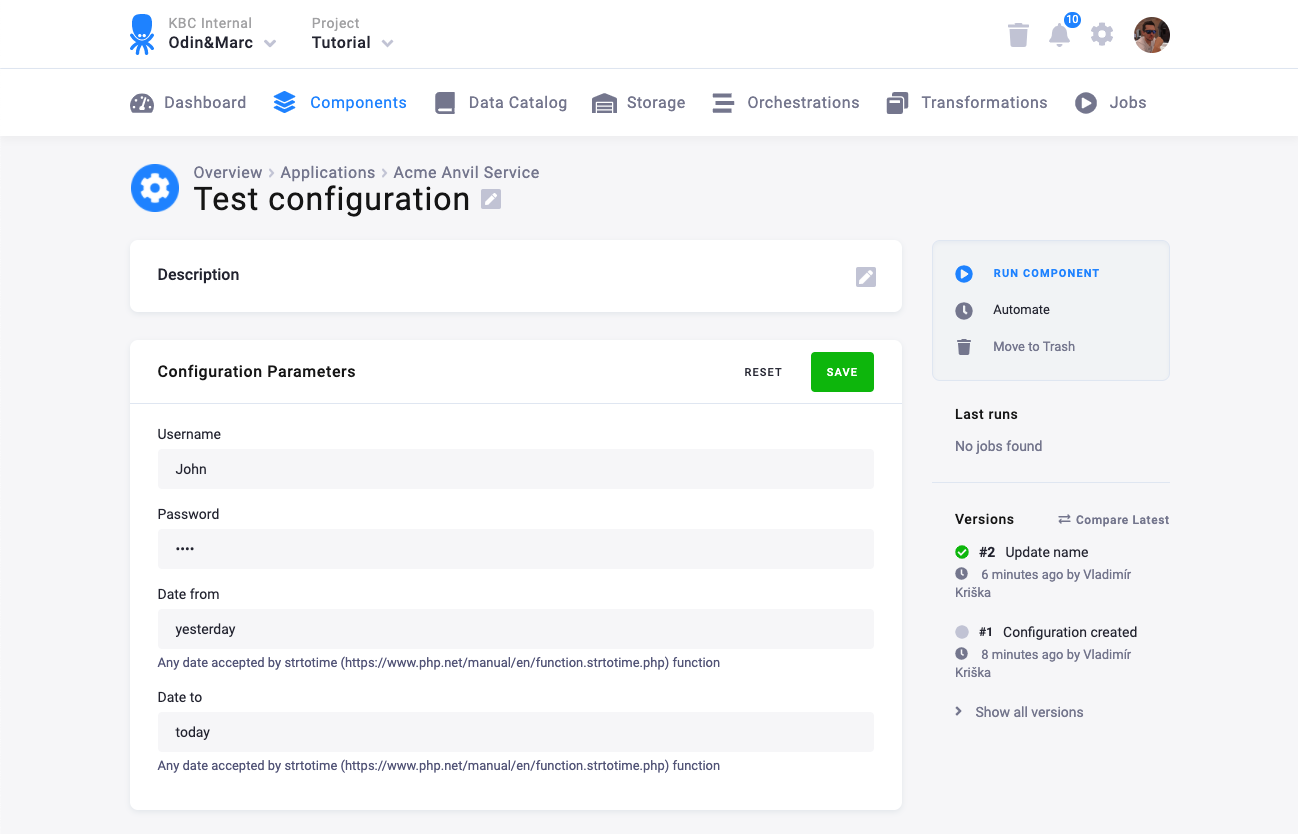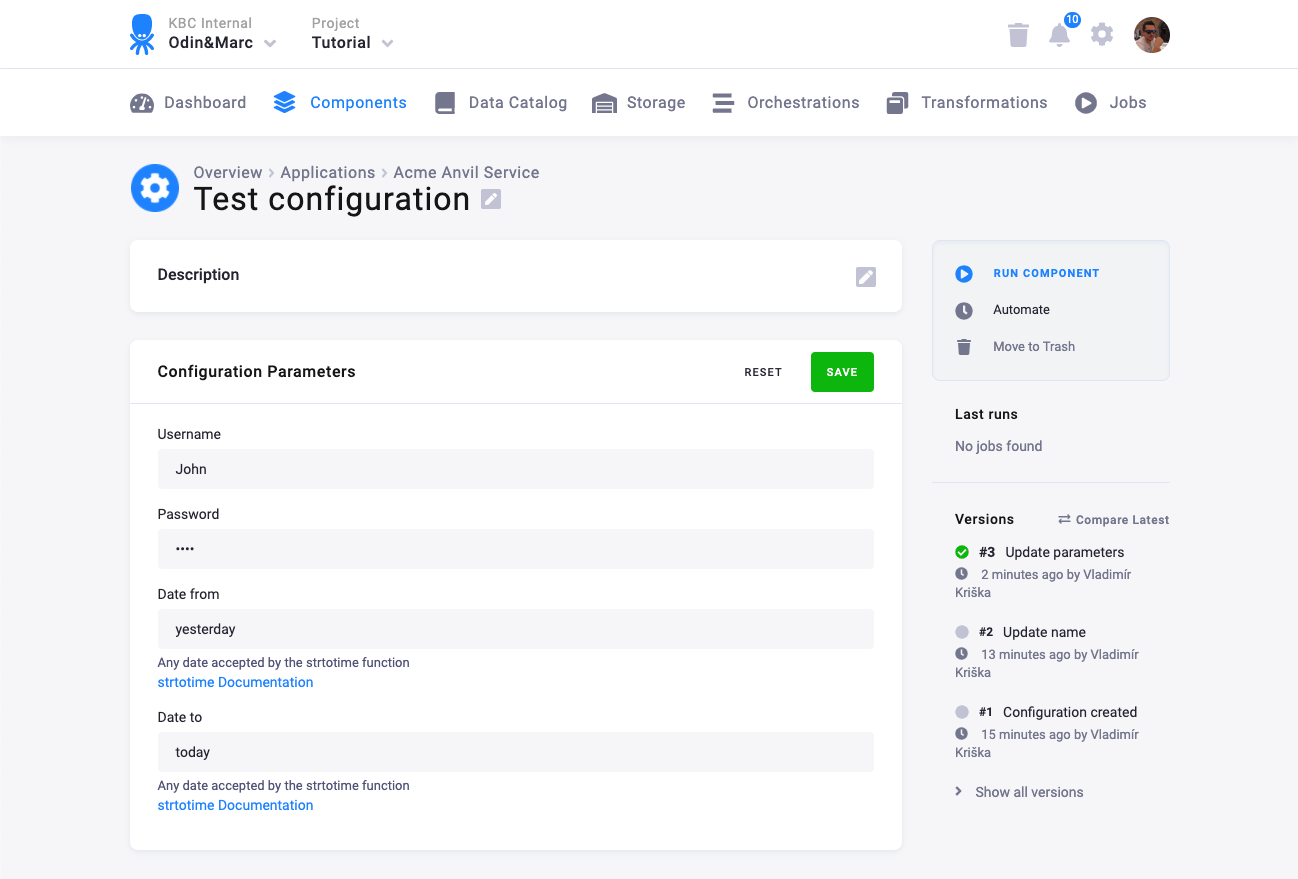Configuration Schema
The default input for a component configuration is a JSON text area.

If you define a JSON schema, we are able to display a nice form and let the user to fill the JSON using a set of defined inputs.

Using the configuration schema also allows us to validate the user input on frontend.
Creating Schema
JSON schemas are well documented on the json-schema.org website.
We use JSON Editor for displaying a schema. The supported formatting options for the editor are available in the official editor documentation.
For developing and testing, use, for example, JSON Editor available on-line, or the JSON-Editor Interactive Playground.
Example
Let’s assume your component accepts the following configuration:
{
"username": "foo",
"#password": "baz",
"dateFrom": "yesterday",
"dateTo": "today"
}This looks like an appropriate form:

The form above can be created using this JSON Schema:
{
"title": "Parameters",
"type": "object",
"required": [
"dateFrom",
"dateTo",
"username",
"#password"
],
"properties": {
"username": {
"title": "Username",
"type": "string",
"minLength": 1,
"default": "",
"propertyOrder": 1
},
"#password": {
"title": "Password",
"type": "string",
"format": "password",
"minLength": 1,
"default": "",
"propertyOrder": 2
},
"dateFrom": {
"title": "Date from",
"type": "string",
"description": "Any date accepted by strtotime (https://www.php.net/manual/en/function.strtotime.php) function",
"minLength": 1,
"default": "",
"propertyOrder": 3
},
"dateTo": {
"title": "Date to",
"type": "string",
"description": "Any date accepted by strtotime (https://www.php.net/manual/en/function.strtotime.php) function",
"minLength": 1,
"default": "",
"propertyOrder": 4
}
}
}Links Example
If you want to provide links to external resources, keep in mind that the configuration schema does not support markdown,
but it has a links feature. The above example can be modified so that the links are clickable:
{
"title": "Parameters",
"type": "object",
"required": [
"dateFrom",
"dateTo",
"username",
"#password"
],
"properties": {
"username": {
"title": "Username",
"type": "string",
"minLength": 1,
"default": "",
"propertyOrder": 1
},
"#password": {
"title": "Password",
"type": "string",
"format": "password",
"minLength": 1,
"default": "",
"propertyOrder": 2
},
"dateFrom": {
"title": "Date from",
"type": "string",
"description": "Any date accepted by the strtotime function",
"minLength": 1,
"default": "",
"propertyOrder": 3,
"links": [
{
"rel": "strtotime Documentation",
"href": "https://www.php.net/manual/en/function.strtotime.php"
}
]
},
"dateTo": {
"title": "Date to",
"type": "string",
"description": "Any date accepted by the strtotime function",
"minLength": 1,
"default": "",
"propertyOrder": 4,
"links": [
{
"rel": "strtotime Documentation",
"href": "https://www.php.net/manual/en/function.strtotime.php"
}
]
}
}
}Which renders like this:

